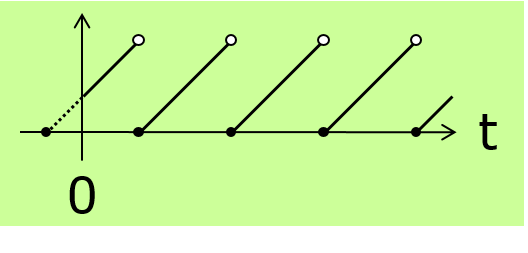First Example
The following program (also called a model) describes a sawtooth function with the following shape:
INIT <=> 0 <= f < 2. INCREASE <=> [](f' = 1). DROP <=> [](f- = 2 => f = 0). INIT, INCREASE << DROP.
The first three lines (often called rules or named constraints) define three constraints, and the final line combines those rules.
This program defines the trajectory of a variable f (whose value is a function of nonnegative time) in the following way.
- The rule INIT defines the value of f at time 0, which takes an uncertain value between 0 and 2.
- The rule INCREASE states that the slope of f is always 1.
- The rule DROP states that the value of f is reset to 0 whenever the value reaches 2. (The minus sign after f means the left limit of f).
- The final line states that
- INIT is enabled,
- DROP is enabled, and
- INCREASE is enabled whenever it is consistent with DROP (that is, the priority of DROP is higher than INCREASE).
More examples can be found in the Examples page.
Last-modified: 2020-04-14 (Tue) 08:40:34 (1914d)
